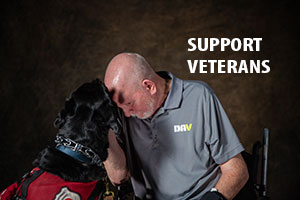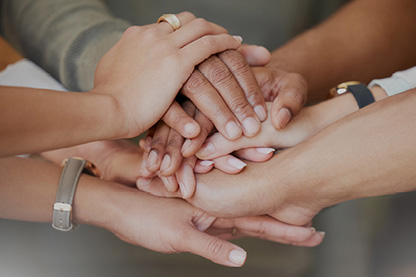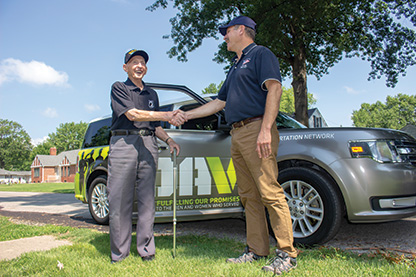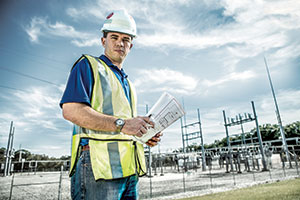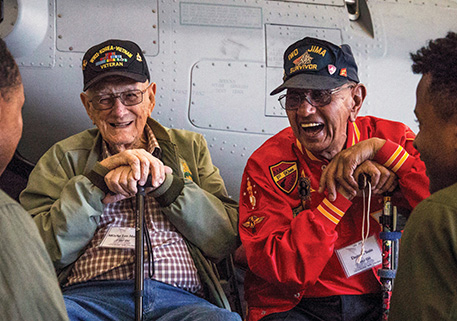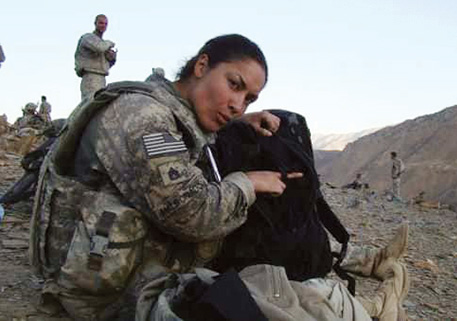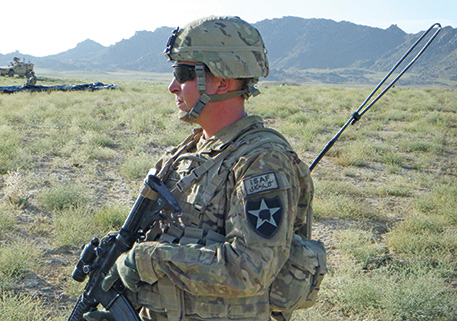Veterans Prothesis Facts
Integrated data from the Departments of Veterans Affairs and Defense show that traumatic amputations account for less than half of 1% of the veteran population. However, research also shows amputees have more co-morbidities. After leaving military service, over 80% of amputees also have diagnoses in each of the following categories: mental disorders, diseases of the nervous system and sense organs, and diseases of the musculoskeletal system and connective tissue in addition to their injury (VA IG Healthcare Inspection: Prosthetic Limb Care in VA Facilities).
Coming to terms with limb loss, treating the additional physical and mental medical concerns that accompany it, and adapting to use of prosthetic devices or other adaptive equipment is an important part of establishing a “new normal.”
Prostheses
Many factors help to guide selection of a prosthesis—or artificial limb—including the veteran’s health, activity level and, of course, personal preference. From purely cosmetic models to externally powered, myoelectric prostheses, these devices run the gamut. Veterans can find a wide range of specialized devices to perform virtually any sport or activity. The VA can also provide assistive technology to veterans, including wheelchairs, adapted computer equipment and adaptive sports equipment.
VA researchers develop and test a wide variety of prosthetic devices to help meet the lifestyle and medical needs of veterans with amputations, and their goal is to offer prostheses that will restore veterans to their highest possible level of functioning within their families, communities and workplaces.
The VA’s Prosthetics and Sensory Aids Service is the largest and most comprehensive provider of prosthetic devices and sensory aids in the world. The VA Rehabilitation and Prosthetic Services site also has list of accredited VA orthotic and prosthetic providers.
3D-printed prostheses
Millions of veterans rely on prosthetic and orthotic devices provided by the VA, and 3D printing allows physicians to create highly customized devices to fit each patient’s needs.
For several years, the Veterans Health Administration has been conducting research and building networks to better incorporate 3D printing into its technological toolkit. Occupational therapists at the VA are already using 3D-printing technology to create specialized orthotics, providing veterans with same-day fitting and delivery. This reduces the need for repeat visits, allows for easier replacement if the orthotic breaks and is a far less costly method of production.
3D printing for prosthetic devices to replace arms and legs has proved somewhat more difficult. While many arm, hand and even some foot designs are available for DIY printing, 3D-printed prosthetic legs prove more difficult, as commercially available printing materials are not strong enough to support body weight.
The technology, however, is new and rapidly developing, and is likely to create a limitless variety of possibilities in the future.
Limb replacement
Medical advances have, in recent years, made the seemingly impossible a new reality for veterans with amputations—including full-limb transplants. Only a few hospitals in the nation are capable of providing this highly complex, specialized procedure and follow-on care. The VA does not provide these surgeries, but you can always speak to your VA provider or health care team to discuss available options.
Considerations for women veterans
As the physiological makeup of men and women varies greatly, special considerations should be made when a woman veteran with an amputation is fitted for prosthetic devices. Aside from simple cosmetic preferences—such as having a prosthetic foot match in size to an in-tact foot—women may require more customization to accommodate a smaller frame.
Additionally, if a woman veteran with an amputation—specifically with a lower-limb amputation—becomes pregnant, she will require adapted care throughout her pregnancy to accommodate for the strain put on prosthetic devices from normal maternal weight gain, and from natural changes in bone structure during this process.
If you are a veteran receiving care through the VA for an amputation and are pregnant, you can contact a VA maternity care coordinator to help ensure you receive coordinated care across the full spectrum of your needs.
VA Amputation System of Care
The VA’s mission is to provide state-of-the-art, holistic, interdisciplinary care to veterans with amputations. To enhance veterans’ access to the latest rehabilitation techniques and prosthetic technology, the VA Amputation System of Care was created. It is a four-component system that helps veterans find the expertise they require, consisting of:
- 7 Regional Amputation Centers (RACs) that house the highest level of specialized expertise in clinical care and technology, providing rehabilitative care to the most complex cases.
- 18 Polytrauma/Amputation Network Sites (PANs) that provide both inpatient and outpatient rehabilitation and prosthetic labs geographically closer to veterans’ homes.
- Amputation Care Teams (ACTs) that provide a designated Amputation Clinic and dedicated interdisciplinary team, but may not provide the full services of RACs or PANs.
- Amputation Points of Contact (APOCs), located at smaller VA medical facilities, that act as a point of contact for consultation and assessment for the patient but without resources or expertise to meet rehabilitative or prosthetic needs of a veteran with amputation.
Special benefits available for veterans with amputations
- Clothing allowance: Veteran amputees with service-connected disability who use prosthetic or orthopedic gear can apply to receive an annual VA clothing allowance. See the Special Benefit Allowances Rate Table for more information.
All clothing allowance application forms are to be submitted to the Prosthetic and Sensory Aids Service (PSAS) at the VA medical center closest to you on or before Aug. 1 each calendar year.
- Home improvements and structural alterations (HISA): Veterans with amputations may apply for HISA grants to make medically necessary changes to existing home structures, to building ramps, adapting bathroom and shower facilities, and adjusting doorways and countertop or sink heights.
A lifetime HISA benefit up to $6,800 may be provided for veterans who have a service-connected condition and veterans who have a non-service-connected condition rated 50% or more. A lifetime benefit up to $2,000 may be provided for veterans who have a non-service-connected condition.
- Automobile adaptive equipment (AAE): Veterans with amputations can apply for a VA AAE grant to acquire the necessary adaptive equipment for a vehicle, such as a platform wheelchair lifts, UVL (under-vehicle lifts), power door openers, lowered floors or raised roofs, raised doors, hand controls, left foot gas pedals, reduced- and zero-effort steering and braking, and digital driving systems.
See the https://www.benefits.va.gov/compensation/special_Benefit_Allowances_2019.asp for more information.
The VA also trains veterans through the VA Driver’s Rehabilitation Program to safely operate their vehicle on the road. The program provides reimbursement for standard equipment, including power steering, power brakes, power windows, power seats and other special equipment required to safely operate an approved vehicle.
- Specially Adapted Housing (SAH) grant: SAH grants can help disabled veterans construct specially adapted homes, remodel an existing home or pay down an existing mortgage on a specially adapted home acquired without the assistance of a VA grant.
- Special Housing Adaptation (SHA) grant: SHA grants help certain disabled veterans adapt or purchase a home to accommodate their disability. The grant can be used to adapt an existing home that the veteran or a family member owns or intends to purchase, or to help purchase an already adapted home. The veteran must live in the house that has been or will be adapted to qualify for the grant.
- Temporary Residence Adaptation (TRA) grant: A TRA grant can be issued to SAH- or SHA-eligible veterans or service members temporarily residing in a home owned by a member of their family. This grant will not be deducted from the total grant funds available to a veteran but will be deducted from one of the three usages allotted to them.
Veterans can submit an Application in Acquiring Specially Adapted Housing or Special Home Adaptation Grant (VA Form 26-4555). Contact a Specially Adapted Housing staff member via email at [email protected] or by phone at 877-827-3702.
Adaptive sports
- National Disabled Veterans Winter Sports Clinic: A world leader in rehabilitation, the clinic—presented by DAV and the VA—provides nearly 400 profoundly disabled veterans with training and rehabilitation every year. Veterans with amputations, traumatic brain injuries, spinal cord injuries, visual impairments and other severe disabilities are challenged to overcome perceived limitations through adaptive skiing, sled hockey, scuba diving, rock wall climbing, education and other activities.
- National Disabled Veterans Golf Clinic: Also presented by DAV and the VA, this annual weeklong adaptive golf event promotes rehabilitation by instructing veterans with visual impairments and other life-changing disabilities in adaptive golf, as well as other adaptive recreational sports.
- National Veterans Wheelchair Games: The world’s largest annual wheelchair sports event solely for military veterans is open to all U.S. veterans with spinal cord injuries, amputations, multiple sclerosis or other central neurological conditions who require a wheelchair for athletic competition. Every year, hundreds of American heroes from World War II, the Korean War, the Vietnam War, the Gulf War and the post-9/11 era compete in this celebration of courage and camaraderie. The event is co-sponsored by the VA and Paralyzed Veterans of America.
- National Veterans Summer Sports Clinic: This clinic promotes the value of rehabilitation utilizing a variety of adventure sports and recreational activities, such as sailing, surfing, kayaking and cycling.
- Athlete stipend program: The VA National Veterans Sports Programs & Special Events Office provides a monthly training allowance for those disabled veterans who are training in Paralympic sports and those selected for or competing with the national Olympic Team.
Additional resources
Contact a DAV benefits expert or transition service officer if you have questions about your service-connected disability rating or benefits or if you need assistance applying.

